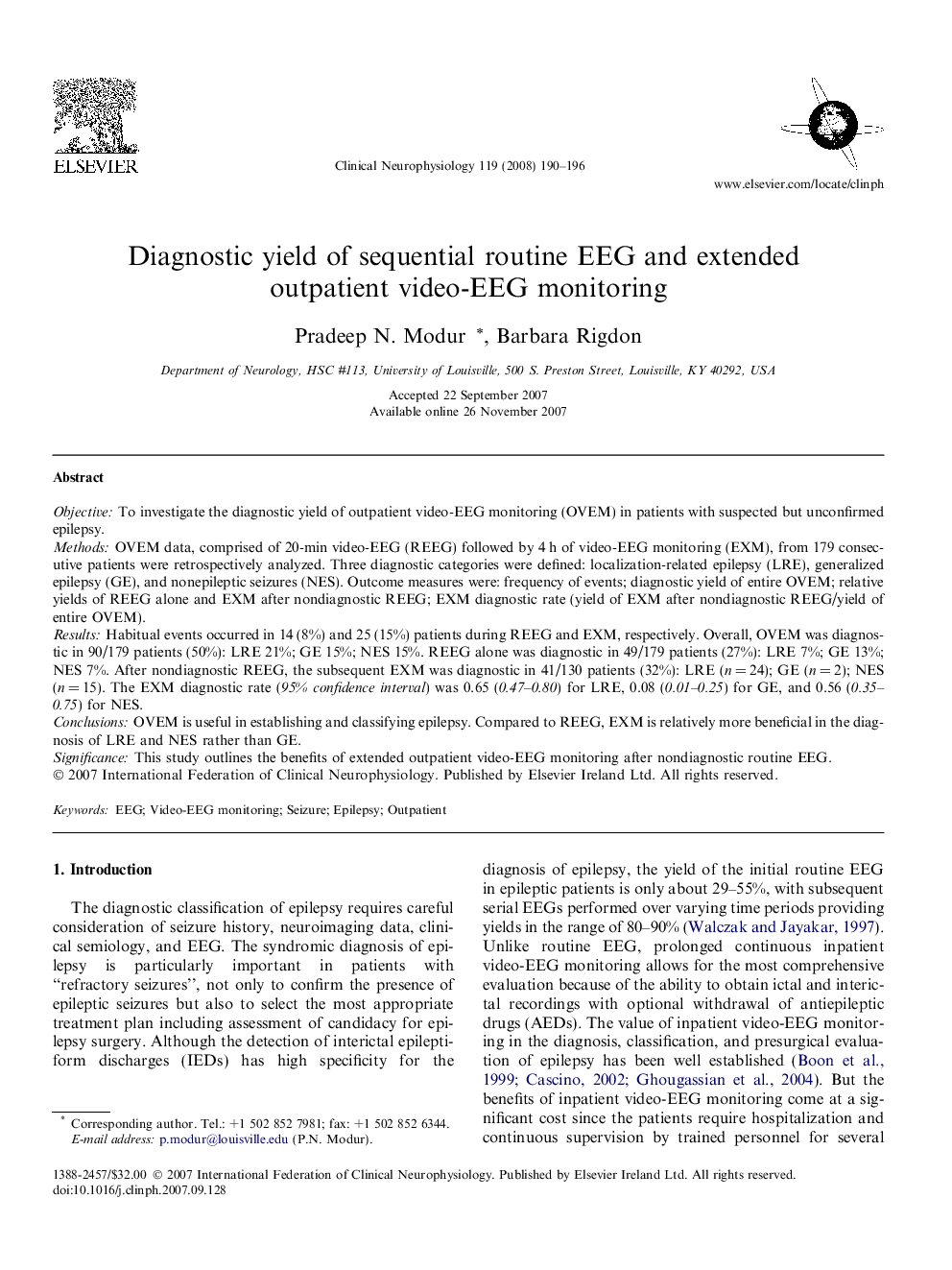| Article ID | Journal | Published Year | Pages | File Type |
|---|---|---|---|---|
| 3047053 | Clinical Neurophysiology | 2008 | 7 Pages |
ObjectiveTo investigate the diagnostic yield of outpatient video-EEG monitoring (OVEM) in patients with suspected but unconfirmed epilepsy.MethodsOVEM data, comprised of 20-min video-EEG (REEG) followed by 4 h of video-EEG monitoring (EXM), from 179 consecutive patients were retrospectively analyzed. Three diagnostic categories were defined: localization-related epilepsy (LRE), generalized epilepsy (GE), and nonepileptic seizures (NES). Outcome measures were: frequency of events; diagnostic yield of entire OVEM; relative yields of REEG alone and EXM after nondiagnostic REEG; EXM diagnostic rate (yield of EXM after nondiagnostic REEG/yield of entire OVEM).ResultsHabitual events occurred in 14 (8%) and 25 (15%) patients during REEG and EXM, respectively. Overall, OVEM was diagnostic in 90/179 patients (50%): LRE 21%; GE 15%; NES 15%. REEG alone was diagnostic in 49/179 patients (27%): LRE 7%; GE 13%; NES 7%. After nondiagnostic REEG, the subsequent EXM was diagnostic in 41/130 patients (32%): LRE (n = 24); GE (n = 2); NES (n = 15). The EXM diagnostic rate (95% confidence interval) was 0.65 (0.47–0.80) for LRE, 0.08 (0.01–0.25) for GE, and 0.56 (0.35–0.75) for NES.ConclusionsOVEM is useful in establishing and classifying epilepsy. Compared to REEG, EXM is relatively more beneficial in the diagnosis of LRE and NES rather than GE.SignificanceThis study outlines the benefits of extended outpatient video-EEG monitoring after nondiagnostic routine EEG.
